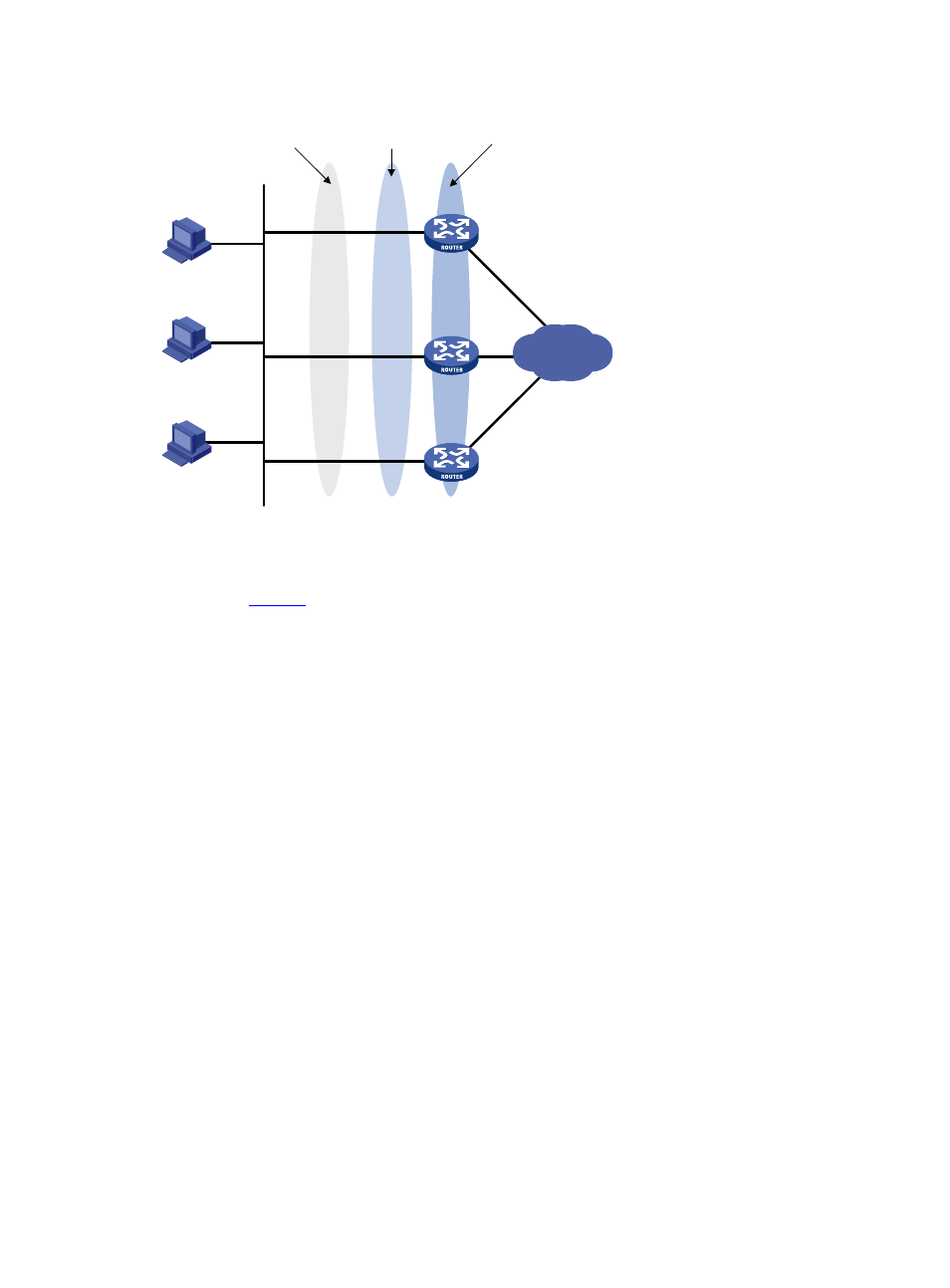Vrrp load balancing mode, Overview, N in – H3C Technologies H3C SecPath F1000-E User Manual
Page 9: Figure 6

8
Figure 6 VRRP in load sharing mode
Host A
Host B
Host C
Router A
Backup
Router B
Backup
Router C
Master
VRRP group 2
VRRP group 3
VRRP group 1
Master
Backup
Backup
Backup
Master
Backup
Network
A router can be in multiple VRRP groups and hold a different priority in a different group.
As shown in
, three VRRP groups are present:
•
VRRP group 1: Router A is the master; Router B and Router C are the backups.
•
VRRP group 2: Router B is the master; Router A and Router C are the backups.
•
VRRP group 3: Router C is the master; Router A and Router B are the backups.
For load sharing among Router A, Router B, and Router C, hosts on the LAN need to be configured to use
VRRP group 1, 2, and 3 as the default gateways respectively. When configuring VRRP priorities, make
sure that each router holds such a priority in each VRRP group that it will take the expected role in the
group.
VRRP Load Balancing Mode
Overview
When VRRP works in standard protocol mode, only the master can forward packets and the backups are
in the state of listening. You can create multiple VRRP groups to share the load among multiple routers,
but hosts on the LAN need to be configured with different gateways, thus making the configuration
complicated.
In load balancing mode, VRRP provides load balancing in addition to virtual gateway redundancy by
mapping a virtual IP address to multiple virtual MAC addresses to assign each router in a VRRP group
one virtual MAC address. In this way, each router in this VRRP group can forward packets. In load
balancing mode, you need to create only one VRRP group to balance load among multiple routers,
instead of allowing one router to bear the load while other routers stay idle.
